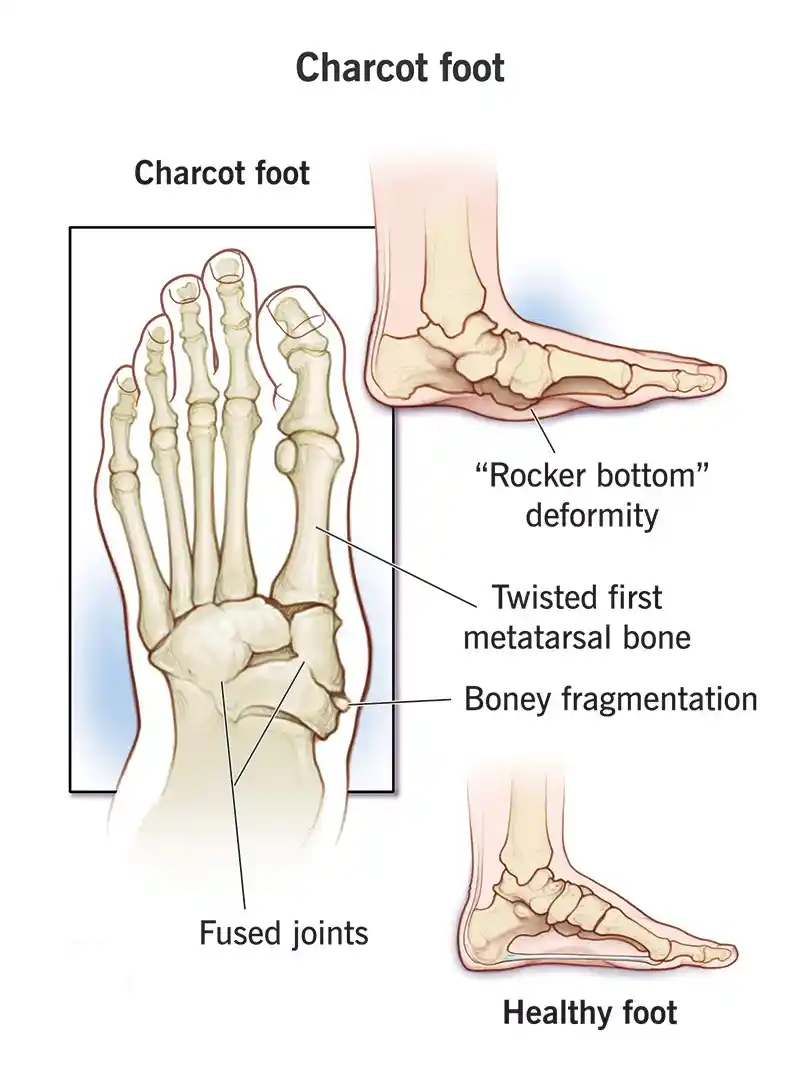Charcot foot, also known as Charcot neuroarthropathy, is a serious condition that affects the bones, joints, and soft tissues of the foot or ankle. It is typically seen in individuals with neuropathy (nerve damage), often as a result of conditions such as diabetes. Charcot foot can cause the bones to weaken and collapse, leading to deformities and joint instability. The treatment of Charcot foot is complex and requires a multidisciplinary approach involving medical professionals such as orthopedic surgeons, endocrinologists, and wound care specialists. Here are some key aspects of Charcot foot treatment:
- Offloading and Immobilization:
- The primary goal in treating Charcot foot is to offload the affected area to prevent further damage and promote healing. This can involve using specialized casts, braces, orthotics, or even non-weight-bearing devices like crutches.
- Rest and Elevation:
- Immobilization and elevation help reduce inflammation and swelling, which are common in Charcot foot cases.
- Medical Management:
- Addressing the underlying condition, such as diabetes, is crucial to prevent recurrence. Blood sugar control and proper management of neuropathy can slow down the progression of Charcot foot.
- Medications to manage pain and inflammation may be prescribed.
- Wound Care:
- Individuals with Charcot foot are at risk of developing ulcers and infections due to the altered structure of the foot. Proper wound care, including cleaning and dressing any ulcers, is important to prevent complications.
- Custom Footwear and Orthotics:
- After the acute phase of treatment, individuals may require specially designed shoes or orthotic devices to provide support and prevent further foot deformities.
- Physical Therapy:
- Once the acute phase has passed, physical therapy can help improve strength, flexibility, and mobility in the affected foot.
- Surgical Intervention:
- In some cases where severe deformities or instability persist, surgical intervention may be considered. Surgical options might include realignment, fusion of affected joints, or other procedures to stabilize the foot.
- Long-Term Monitoring:
- Regular follow-up appointments with a healthcare team are important to monitor the progress of treatment, prevent complications, and make any necessary adjustments to the treatment plan.
The treatment approach for Charcot foot is highly individualized and depends on factors such as the stage of the condition, the extent of damage, the presence of any complications, and the patient’s overall health. Early diagnosis and prompt treatment are critical to prevent severe deformities and avoid complications.
It’s important to consult a healthcare professional who specializes in the management of Charcot foot for accurate diagnosis and tailored treatment recommendations.


